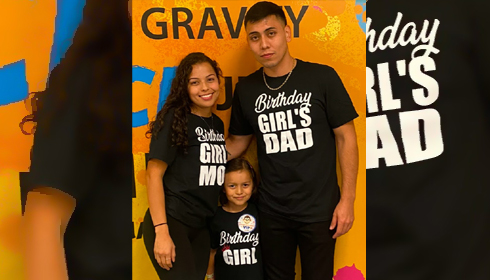
Innovative Surgery Preserves Limb Growth for Childhood Bone Cancer Patients
Arlette Chavez, a lively 3-year-old who delighted in riding her bike and jumping on the bed, experienced an unexpected development when she reported experiencing severe pain in her left arm. Her parents, Lesly Rivera and Carlos Chavez, initially dismissed the injury as trivial, but it turned out to be Ewing's sarcoma, a rare bone and soft tissue disease. Each year, only approximately 200 children in the United States receive a diagnosis of this deadly malignancy, requiring immediate care.
Ms. Rivera expressed concern about the amputation of Arlette's arm. Other conventional procedures, such as replacing the bone with a prosthesis or cadaver bone, would keep the limb intact but limit its future growth. Dr. Alexandra Callan, a musculoskeletal oncologist at UT Southwestern Medical Center and a pediatric orthopaedic surgeon at Children's Health, proposed a life-changing alternative: a groundbreaking 16-hour procedure known as a vascularized growth plate transfer. This novel surgery not only spared Arlette's arm but also guaranteed its ongoing growth, allowing her to live a life free of the constraints of standard treatments.
"It's one of the most satisfying procedures we do," said Dr. Callan. "Our top priority for these kids is to get rid of all their cancer. However, being able to restore their leg in such a way that they can function normally for the rest of their life is really fulfilling.
Growth plates, cartilage regions that allow bones to elongate as children develop, are frequently impaired by Ewing's sarcoma and other childhood bone malignancies. Traditional operations frequently result in limb-length disparities, which might limit daily activities. Dr. Jonathan Cheng, a pediatric hand surgeon and complicated limb restoration expert at UT Southwestern, described how such differences might make it difficult to do ordinary things like dress, play sports, or shake hands.
Dr. Callan, Dr. Cheng, and their colleague Dr. Shai Rozen, a plastic and craniofacial surgeon, started performing growth plate transfers five years ago, a method that originated in Italy and is extremely uncommon in the United States. The operation entails replacing a damaged bone with a portion of the fibula, or smaller leg bone, including its growth plate.
The complexity of the surgery necessitates a multidisciplinary approach. Dr. Rozen carefully removes the fibula while conserving its blood flow, ensuring that it is viable for transfer. Drs. Callan and Cheng remove tumor-affected bones while reconstructing essential components, such as the rotator cuff. The surgeon then adjusts the fibula to fit the arm and fixes it with minimal hardware to prevent issues.
"It's a demanding day in the operating room," said Dr. Cheng. "However, we are well prepared for everything to go smoothly. We have polished the expertise required for this process over the course of our careers.
One of the reasons this procedure is so uncommon is the requirement for smooth teamwork among doctors with highly complementary skills. Dr. Rozen attributes the treatments' success to the team's trust and camaraderie.
"Having a close-knit team that communicates, innovates, and collaborates has been key to making this happen," he told me. The three of us' longtime friendships are the source."
So far, the team has conducted this revolutionary surgery on six youngsters, all of whom have continued to grow and function better in their damaged limbs. The team uses a database to track outcomes, allowing them to adjust and improve the method over time.
Arlette, now 8 years old, exemplifies the success of this novel technique. Her arm has grown nearly 2 inches after the surgery, allowing her to complete daily duties with ease. She now enjoys climbing monkey bars, wearing her hair in a ponytail, and succeeding at jazz dance courses. Arlette aspires to be a dance teacher, a long-held ambition.
Ms. Rivera expresses gratitude for the attention and skill that changed her daughter's life. "They gave her the chance to be a kid again," she told me.
These findings highlight the importance of Dr. Callan's and her colleagues' research. "Innovation is not just about developing new techniques; it's about giving children like Arlette the ability to dream without limits," Dr. Callan added.
Families facing the devastation of paediatric bone cancer find hope in the innovative study at UT Southwestern and Children's Health. By saving both life and limb, this team is redefining what is possible in modern medicine.